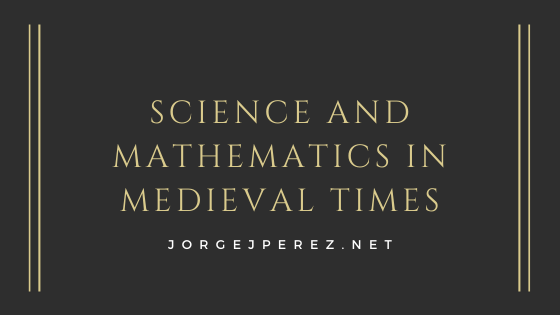The way the ancient people of civilization looked at science was completely different from the way modern people do. In ancient civilizations, the term Scientia referred to the knowledge every person obtained during their lifetime. Enhancing the scientific, mathematical, and artistic subjects was led by Greek and Roman academics. The work of scientists and mathematicians remained stranded in Rome until the Fifth-Century when the fall of the Roman Empire opened academia to the rest of Europe.
Calculating Religious Feasts
The calculating of religious feasts was one of the main reasons for the growth of mathematics and scientific subjects. The arrival of the division between the academic subjects was driven by several Roman academics, who divided subjects into science, mathematics, astronomy, and music. The book of learning was known as the quadrivium.
The learning held within the quadrivium began to be used to calculate the position in a time of moveable religious feasts. The calculating of Easter had caused problems for the Catholic Church for centuries. The date of Easter is not set in stone in the Bible but is recorded as celebrated on the Sunday closest to the 14th on Easter Month. The use of computus charts to calculate the date of Easter is among the oldest mathematical recorded calculations.
The Use of Computus Diagrams
The seat of learning in most communities was located in local Abbeys and monasteries. These remained important to the development of mathematical calculations in the form of computus diagrams. The development of computus diagrams drew inspiration from nature and its cyclical nature. In France and England, academics created documents combining theology and mathematics.
Leaving the Dark Ages
During the period from the fall of the Roman Empire to the 12th-century, Europe had fallen into the Dark Ages and needed the arrival of academics from the Middle East to spark academia. A renewed interest in academics was developed following the arrival of academics from the Middle East and the translating of ancient documents from Roman and Greek academics.
Astronomy Continues to be Important
The rise of astronomy came during the 12th-century when French and English astronomers led the recording of the stars and planets. Images recorded during the 12th-century can be recognized by modern viewers as constellations and planets in the night sky.
As Europe moved into the 13th century, mathematics and science took a dramatic turn for the better.
Mathematics
In the previous century, Euclid’s famed Elements and Persian mathematician al Kwarizmi’s The Compendious Book on Calculation had been translated into Latin. (Computer scientists may be interested to know that al Kwarizmi’s name had been Latinized to Algorithms.)
Elements contained a powerful collection of theorems and proofs which led to far greater rigor in Medieval mathematics. And, al Kwarizmi’s work introduced algebra and systematized Indian numerals. The Roman system had grown too unwieldy for burgeoning European commerce.
Europe began producing great mathematicians in the 13th century, most notably Fibonacci, the creator of the Fibonacci sequence of numbers—1,1,2,3,5,8,13,21… His most important work, Liber Abaci, popularized al Kwarizmi’s system of numerals.
Commerce benefited from these breakthroughs. The emergence of double-entry bookkeeping was made possible by these new numerals. This system of bookkeeping in turn accustomed people to think in terms of strict rules of accounting in more areas of life than business transactions. Early scientists learned to pool larger and more precise bodies of knowledge by balancing nature’s accounts.
Alchemy
Alchemy is generally disdained these days, but alchemical practices led directly to the emergence of the modern science of chemistry. In the 12th and 13th centuries, Albertus Magnus and Roger Bacon made use of Greek works by Hermes and Democritus on the presumed ability to transmute metals in their own alchemical studies.
The study of alchemy led to practical experimentation with chemicals, work generally disdained by the aristocracy because it involved working with materials. Alchemy also forced theoreticians to take physical observations into account along with book study.
Astronomy
Gerard of Cremona regarded the Arab translation of Ptolemy’s famed book on astronomy, the Almagest, so highly that he traveled to Spain to translate it into Latin.
Students at Europe’s new universities learned the Almagest and ancient texts detailing aspects of the celestial sphere and planetary epicycles. Astronomers in Spain had devised new tables based on close observation of planetary motion. By 1320, Parisian astronomers reworked them and spread them throughout Europe.
Thus, a solid scientific framework was laid for the work of the Renaissance scientists.

